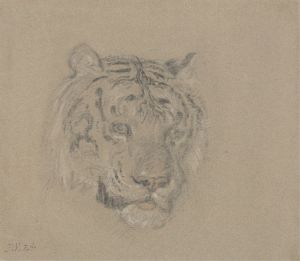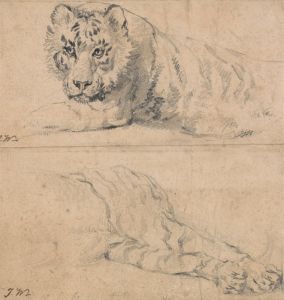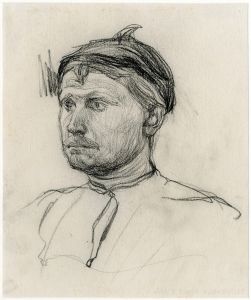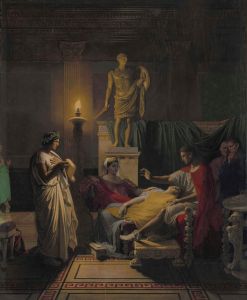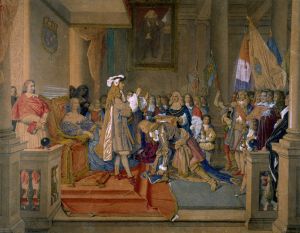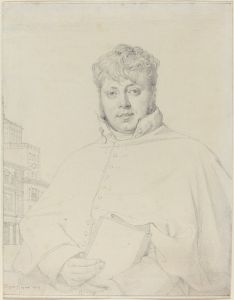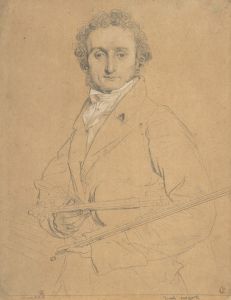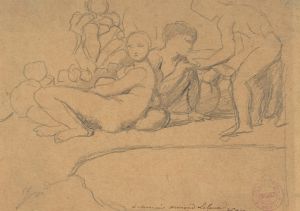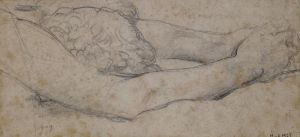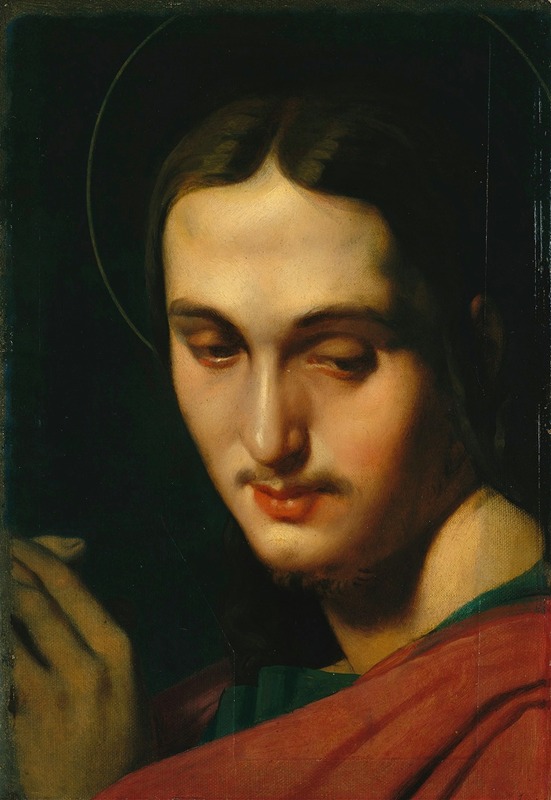
Head of Saint John the Evangelist
A hand-painted replica of Jean Auguste Dominique Ingres’s masterpiece Head of Saint John the Evangelist, meticulously crafted by professional artists to capture the true essence of the original. Each piece is created with museum-quality canvas and rare mineral pigments, carefully painted by experienced artists with delicate brushstrokes and rich, layered colors to perfectly recreate the texture of the original artwork. Unlike machine-printed reproductions, this hand-painted version brings the painting to life, infused with the artist’s emotions and skill in every stroke. Whether for personal collection or home decoration, it instantly elevates the artistic atmosphere of any space.
"Head of Saint John the Evangelist" is a drawing by the renowned French Neoclassical artist Jean Auguste Dominique Ingres. Ingres, born in 1780 in Montauban, France, is celebrated for his precise draftsmanship and his ability to convey the human form with clarity and elegance. He was a prominent figure in the Neoclassical movement, which sought to revive the classical art forms of ancient Greece and Rome, emphasizing harmony, simplicity, and proportion.
The drawing "Head of Saint John the Evangelist" exemplifies Ingres' mastery of line and form. Although specific details about the creation date of this particular work are not well-documented, it is consistent with Ingres' lifelong dedication to drawing as a fundamental aspect of his artistic practice. Ingres often used drawings as preparatory studies for his paintings, but they also stand alone as significant works of art due to their meticulous execution and expressive quality.
Saint John the Evangelist is a prominent figure in Christian theology, traditionally recognized as the author of the Gospel of John, the Epistles of John, and the Book of Revelation. He is often depicted as a youthful figure, sometimes accompanied by an eagle, which is his symbolic attribute. Ingres' depiction focuses on the head of Saint John, capturing a serene and contemplative expression that reflects the saint's spiritual significance.
Ingres' technique in this drawing is characterized by his use of fine lines to define the contours and features of the face, demonstrating his skill in rendering the subtleties of human expression. The drawing likely employs graphite or pencil, mediums that Ingres favored for their ability to produce delicate and precise lines. The attention to detail in the hair, eyes, and other facial features showcases Ingres' commitment to achieving a lifelike representation while maintaining an idealized beauty.
Throughout his career, Ingres was known for his portraits and historical scenes, but his religious works also hold an important place in his oeuvre. His approach to religious subjects often combined a reverence for classical ideals with a deep understanding of the spiritual themes inherent in the subject matter. "Head of Saint John the Evangelist" reflects this synthesis, presenting a figure that is both timeless and imbued with a sense of divine contemplation.
Ingres' influence on the art world extended beyond his lifetime, as he became a pivotal figure for later artists who admired his technical prowess and dedication to classical principles. His drawings, including "Head of Saint John the Evangelist," continue to be studied and appreciated for their contribution to the Neoclassical tradition and their demonstration of the power of line in visual art.
While "Head of Saint John the Evangelist" is not as widely known as some of Ingres' larger paintings, it remains an important example of his skill as a draftsman and his ability to convey complex spiritual themes through simple yet powerful imagery. The drawing is a testament to Ingres' belief in the enduring value of classical art and his commitment to the pursuit of beauty and truth through the medium of drawing.







